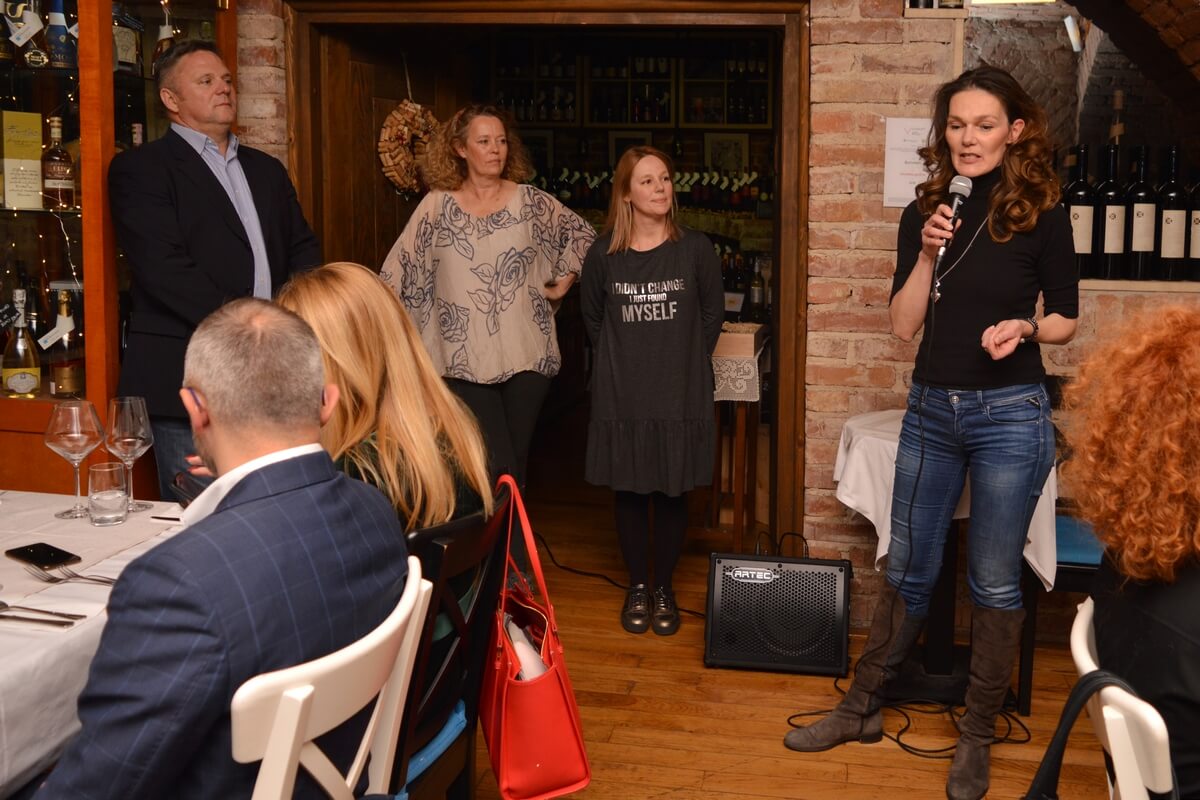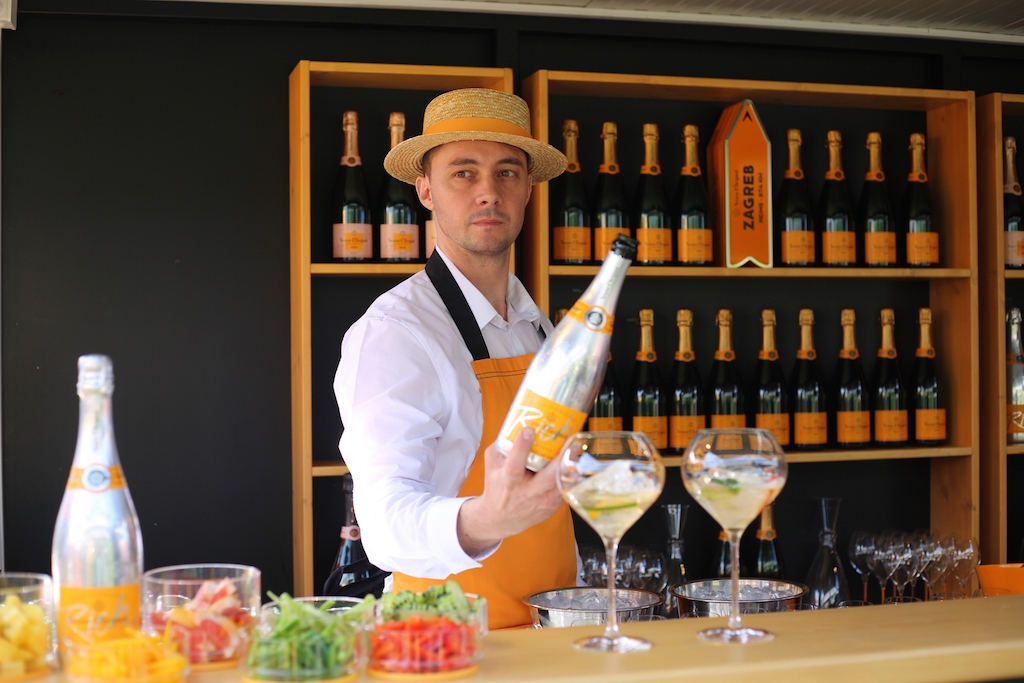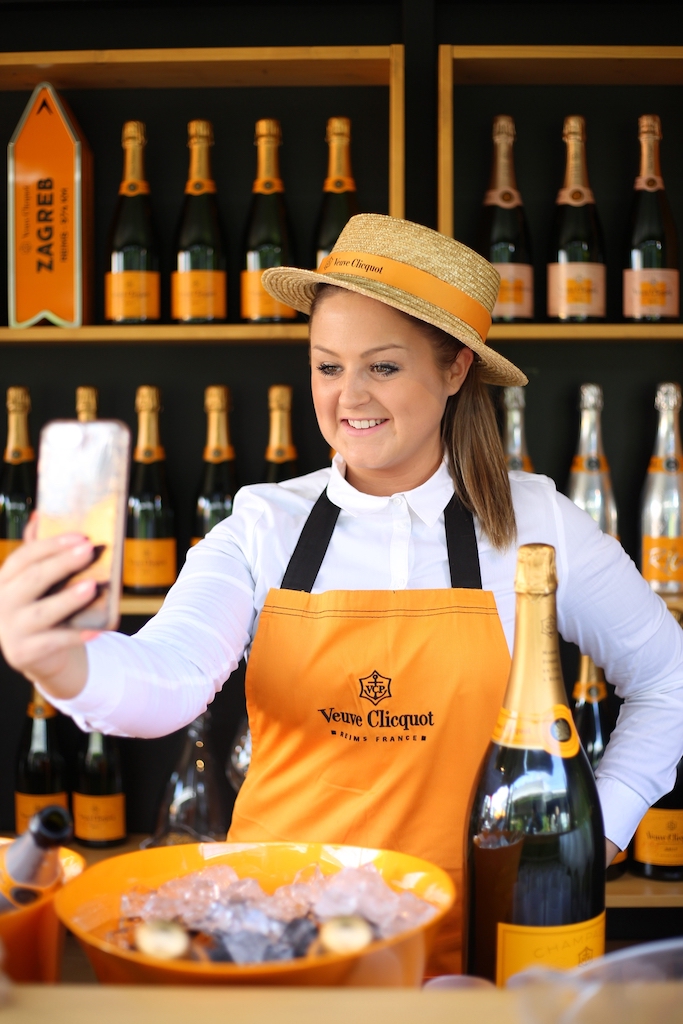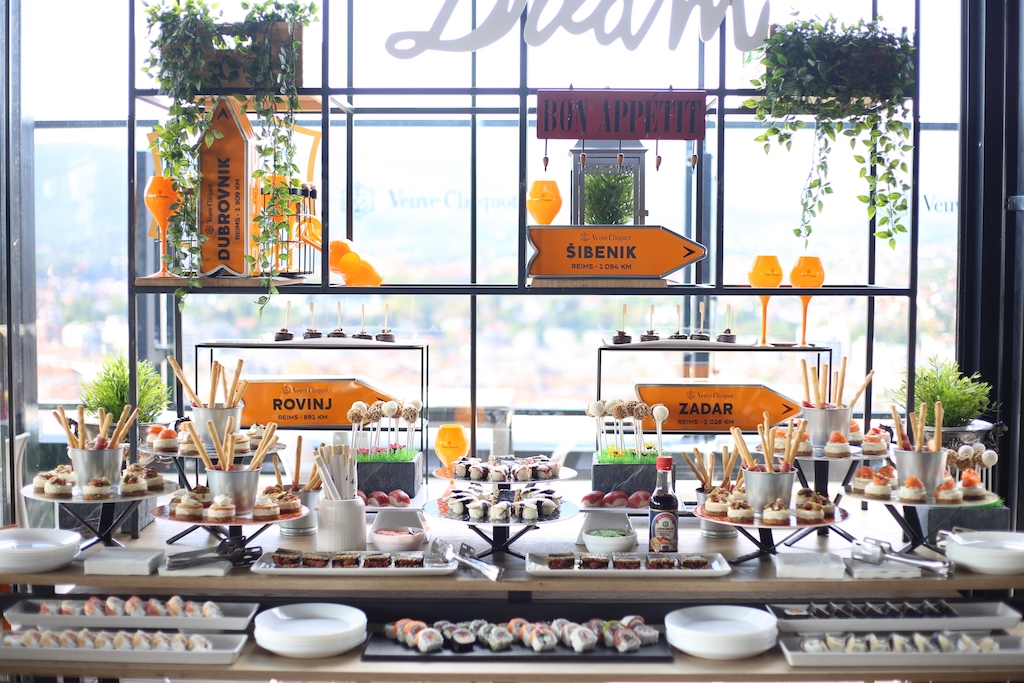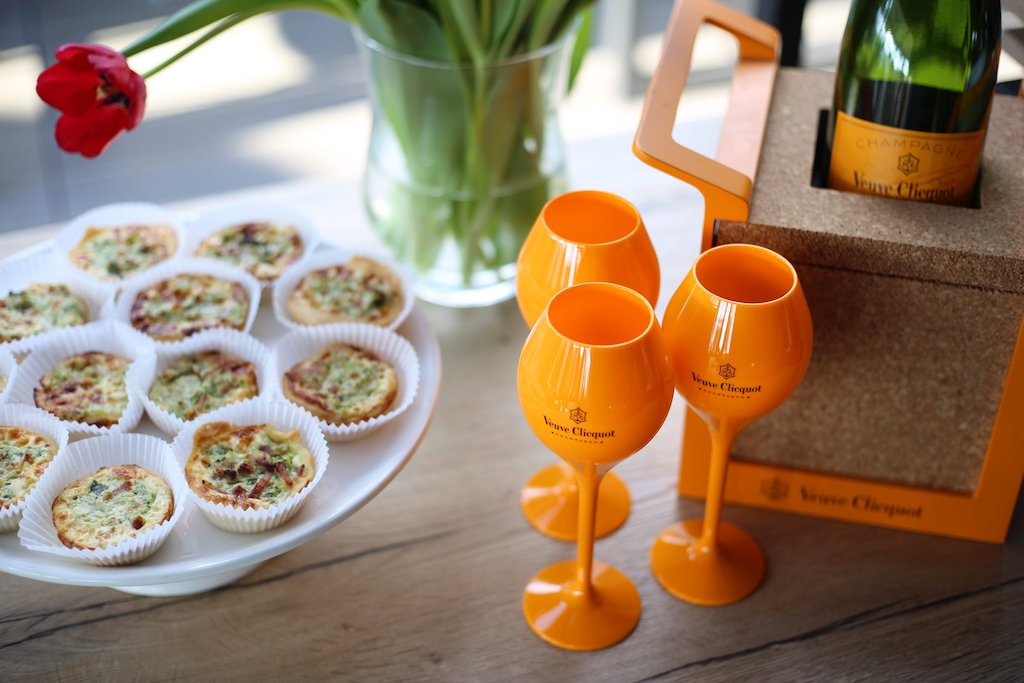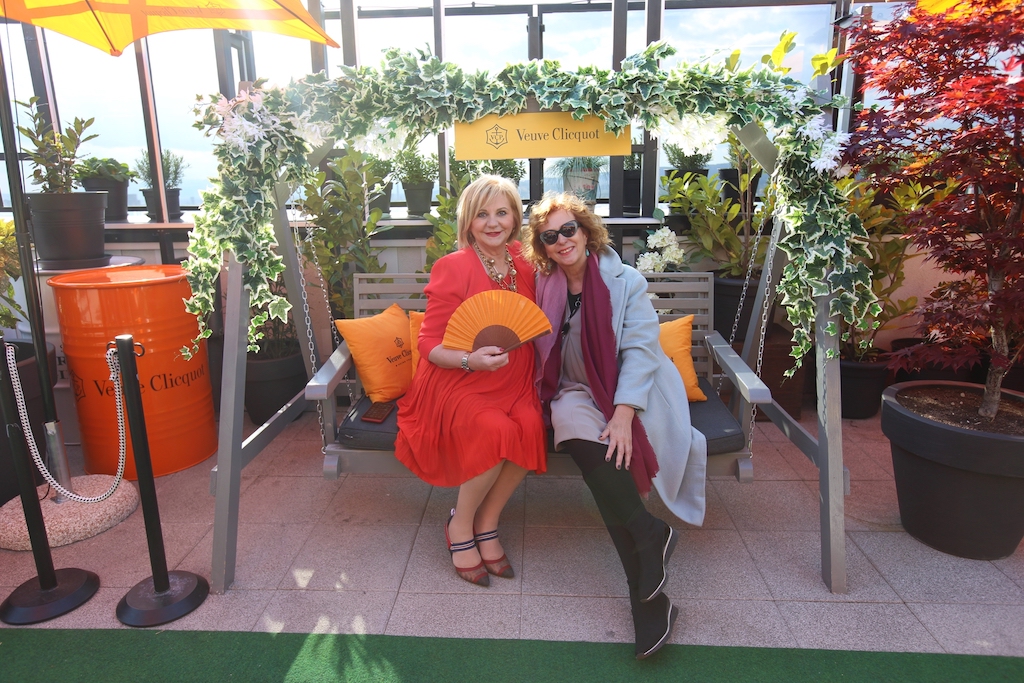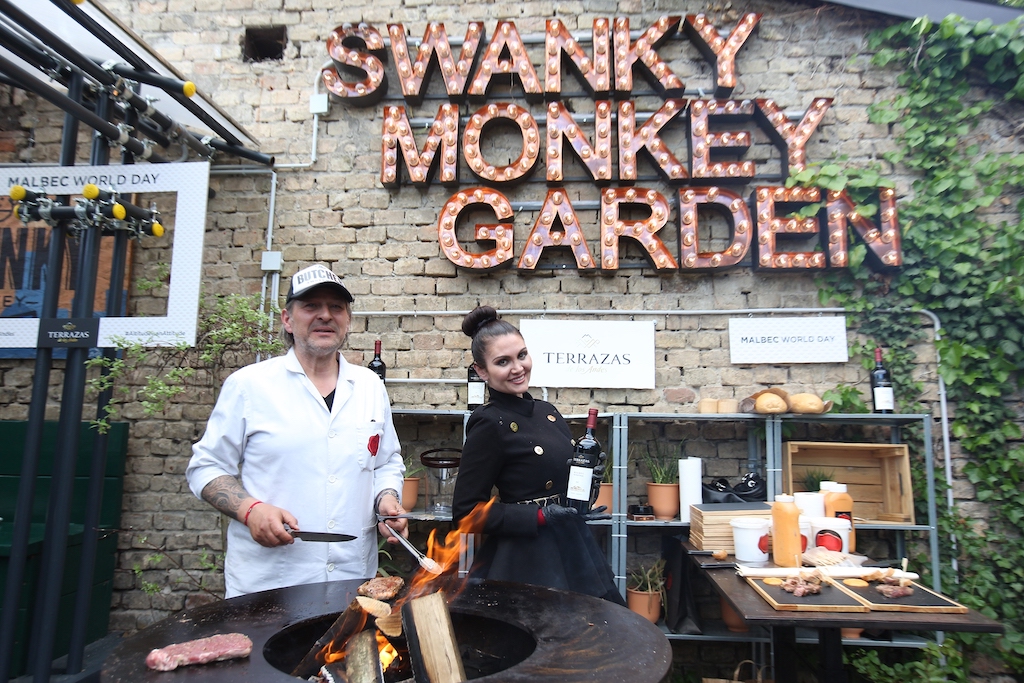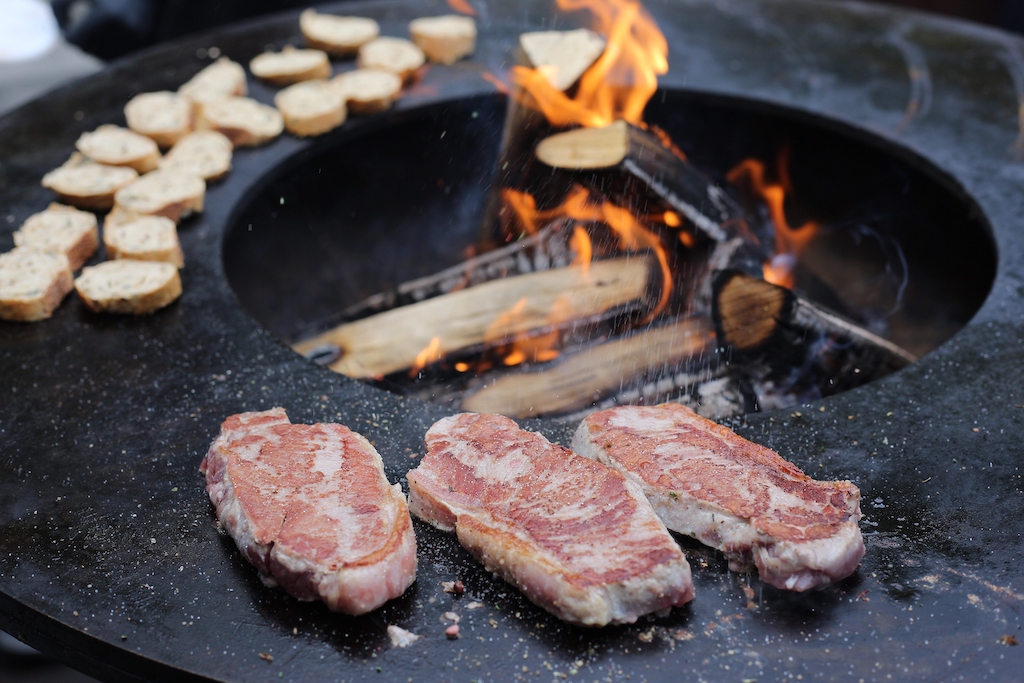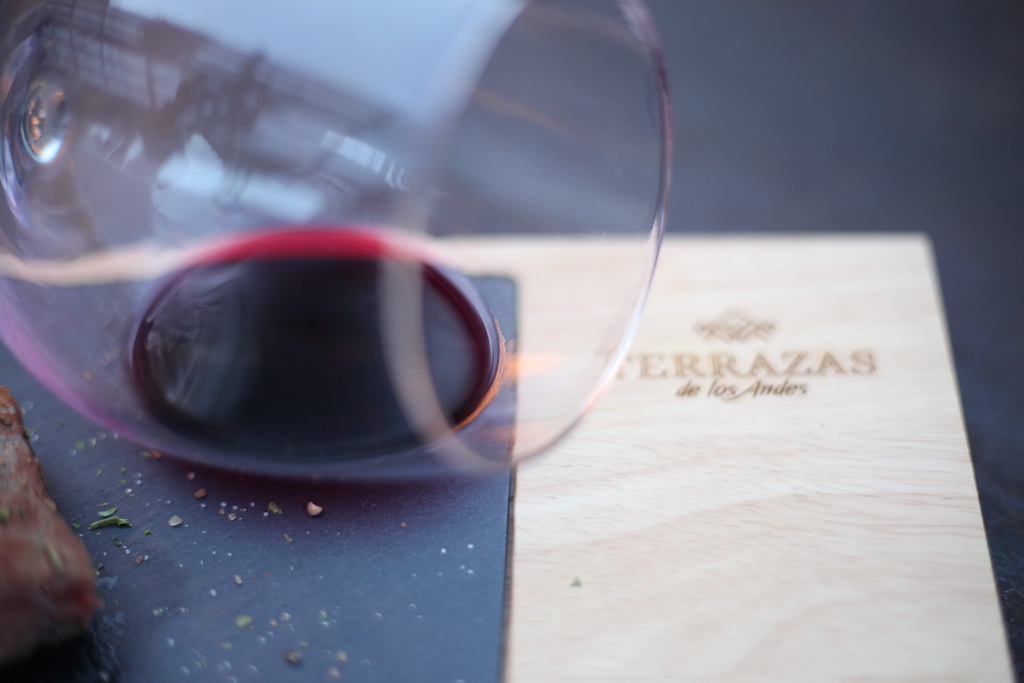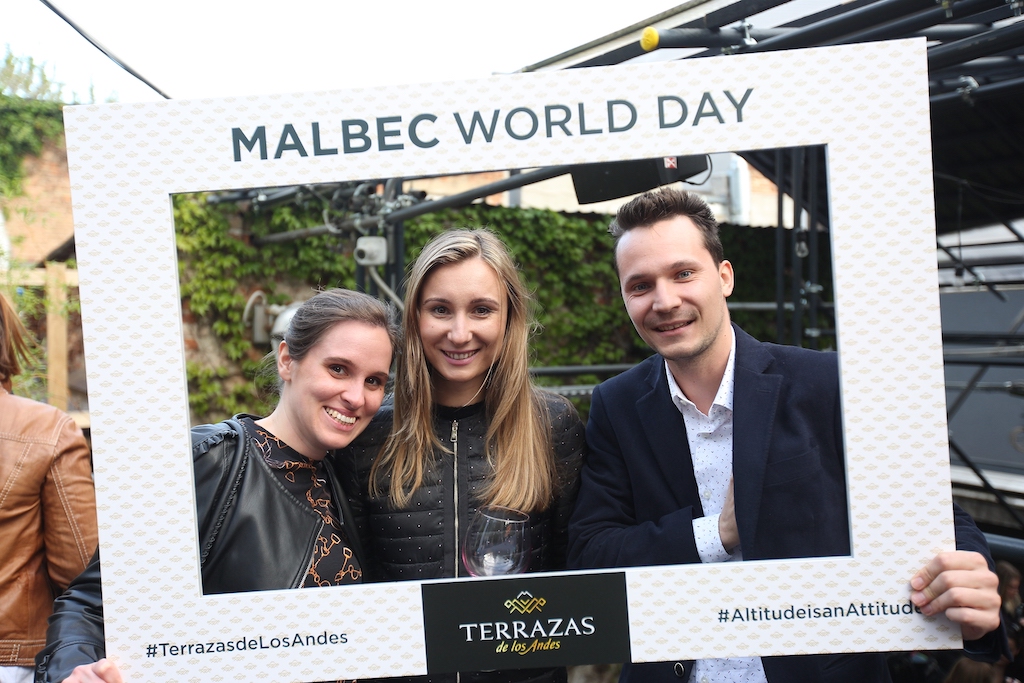20th Urbanovo Wine Festival Begins
In mid-May, Štrigova in Međimurje traditionally becomes the regional oenological and gastronomic centre visited by many fans of excellent wines and good food. For contemporary vineyards and winemakers, the Urbanovo festival has been a special event for two decades, and it now brings together the second generation of winemakers from this area.
The event is organized by the Association of Wine-Growers and Winemakers Hortus Croatiae, Međimurje County, the Municipality of Štrigova, the Štrigova Tourist Board, and the Međimurje County Tourist Board. This year's jubilee wine festival is held under the auspices of President Kolinda Grabar-Kitarović, as well as the Ministry of Agriculture and the Ministry of Economy, Entrepreneurship and Crafts.

The opening was attended by Darko Horvat, Minister of Economy, Entrepreneurship and Crafts; Sunčana Glavak, the envoy of Speaker of Parliament and an MP; Matija Posavec, prefect of Međimurje County; and Zoran Grgić, the dean of the Faculty of Agriculture, University of Zagreb.
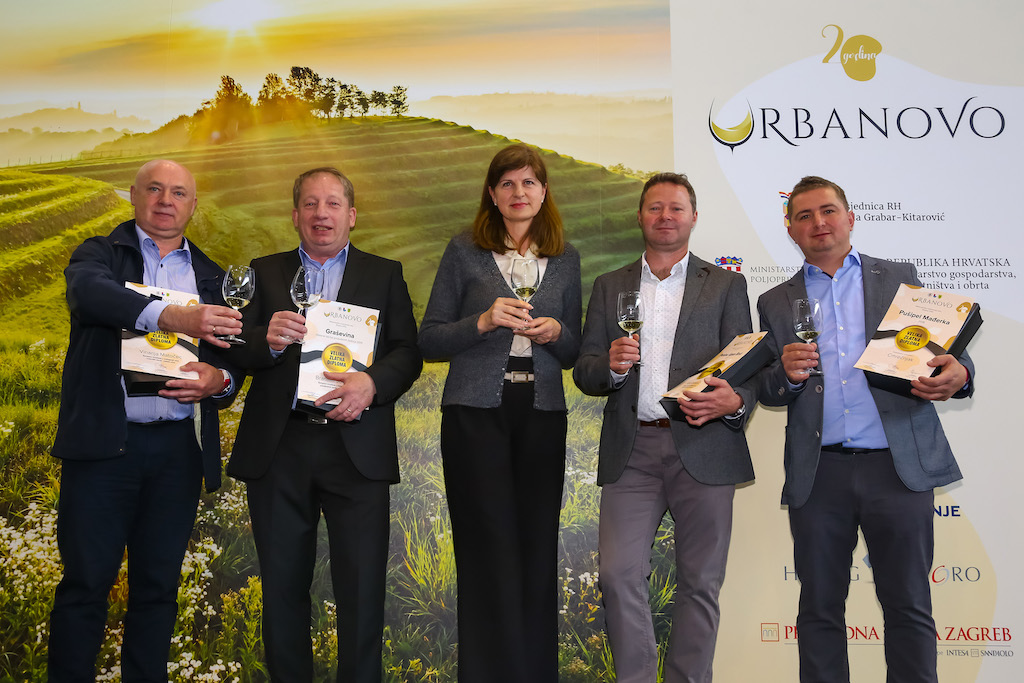
The president of the Hortus Croatiae association David Štampar sent a message to the wine producers and emphasized that the unity of Međimurje winemakers was their strongest link. "In recent years, we have been working together to improve the quality of our region as a tourist destination as well as to raise the quality of wines. We are working hard to create a high-quality wine scene that will enrich this region. I want to thank everyone for their contribution because each of you is a precious factor which affirms our Međimurje."
The event started with the Pušipel Festival, with 24 wineries, members of the Hortus Croatiae association, presenting their wines: Agromeđimurje – Podrum Štrigova, Vina Alojz Novak, Vinogradarstvo i podrumarstvo Belović, Vinarija Cmrečnjak, DGA Pjenušci, Vinska kuća Dvanajščak-Kozol, Izletište „Vinska kuća Hažić“, Vina Horvat, Vinogradarstvo i podrumarstvo Jakopić, Vino Kerman, Vinarija Kocijan, Vina Kojter, Vinska kuća Kossi, Vina Kunčić, Vina Lovrec, Vina Medenjak, Vinarija Munđarov breg, Vina Nemec, Vinarija Novak, Vina Preiner, Solum Vinarija, Vinarija Štampar, Vinogradarstvo i podrumarstvo Tomšić and Vinarija Turk.
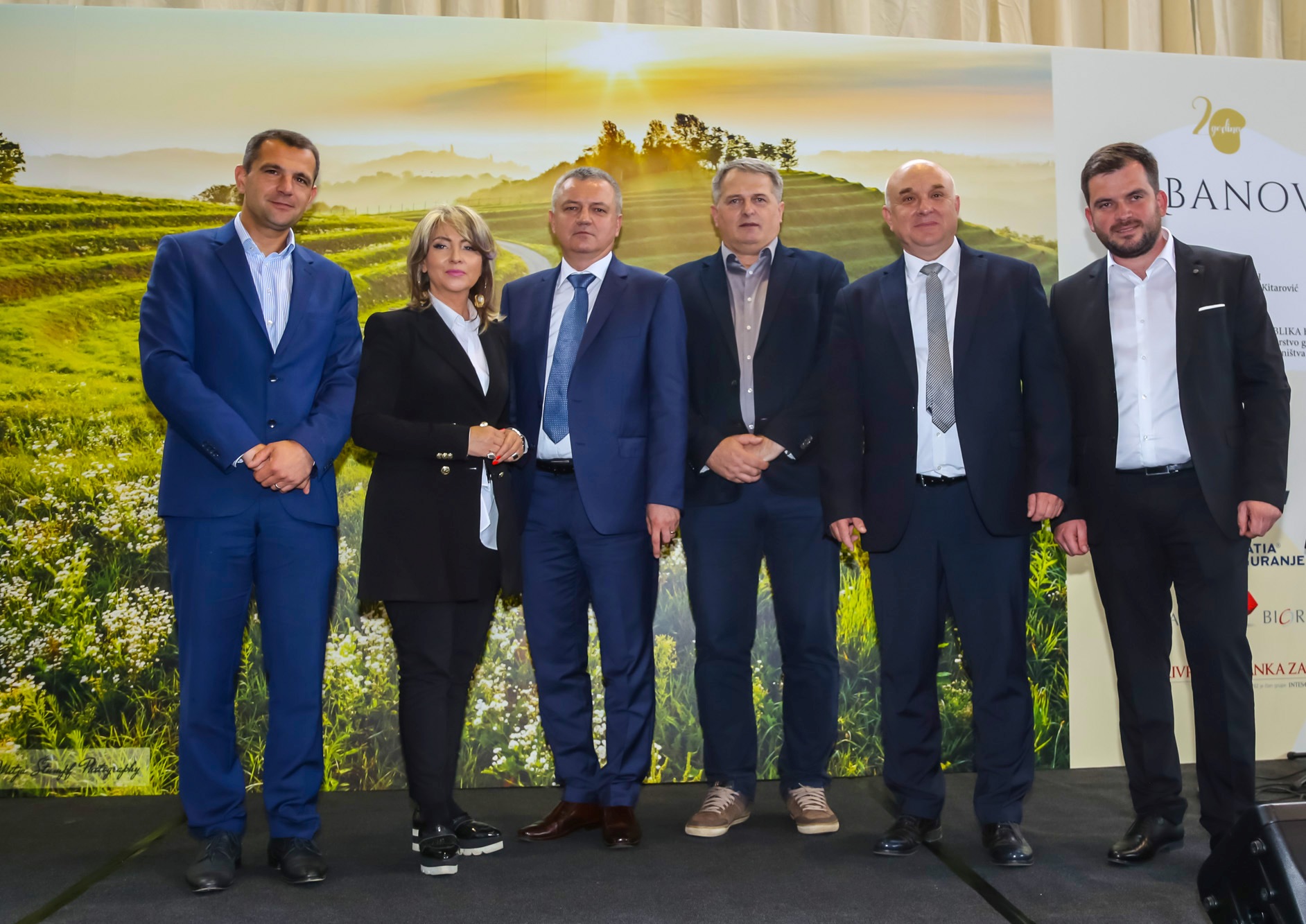
Minister Darko Horvat said: “This event clearly demonstrates that further development of our entire economy must be based on quality. That is proved by the wines here in Međimurje, which have been receiving prestigious international awards year after year. Only last year, Međimurje winemakers won six prestigious Decanter prizes, and we expect this figure to grow this year," he said.

Urbanovo was preceded by the international wine assessment Štrigova 2019. Of the 150 samples received, four awards were given: Pušipel Mađerka 2018 - Cmrečnjak Winery; Graševina, the selected vintage of raisined grapes 2015 - Jakopić winery; Chardonnay 2018 - Vina Matočec; Penina Šipon Brut 2017 – Vina Krampač.
The Pušipel Festival will conclude on Sunday, May 19. In the second week of the event, on Friday and Saturday, May 24 and 25, the Days of Open Cellars will be held, with Međimurje winegrowers organising special programmes in their wineries, which each year attract more and more visitors.
The event traditionally concludes with the Wine Ball, this year held on Friday, May 31, at the Terbotz restaurant.
More wine news can be found in the Lifestyle section.
Traminer Wine Festival Now Just 30 Days Away
At a press conference held at the Vinita wine shop in Osijek, the upcoming Traminer wine festival was presented. The press conference on the “Traminer is Our Favourite” festival heard from festival organisers, Vinko Ručević, the owner of Vinita, and the prominent wine writer Željko Garmaz.
“We are in the final 30 days of countdown until the Traminer festival! If we take into account the programme we have prepared and who will attend the festival, we can be sure that a spectacle is guaranteed. The Traminer festival, which we believe will become an annual tradition, will present Traminer wines produced by more than 70 wineries in Croatia and abroad, including some which have won the International Trophy title at Decanter and 100 points from the great Robert Parker.”
Among them is Domaine Paul Ginglinger from Eguisheim near Colmar, the winner of several of Decanter’s top honours in recent years (two Regional Trophies and an International Trophy!) for the world’s best Traminers. The winery’s owner, Michel Ginglinger, the 13th generation of winemakers from the winery, will personally come and present a lecture on Alsace as one of the world’s top wine regions.
At the large masterclass, which will be the central event of the festival’s first day held in the Old Cellar, Ivan Barbić, the only Master of Wine with a Croatian passport, will analyse the best Croatian Traminer wines and compare them with wines from the four harvests of the Domaine Weinbach winery from Alsace.
Radovan Šuman from Slovenia will host a lecture on biodynamics in viticulture, Danilo Steyer, also from Slovenia, will talk about Traminer as a base wine for the production of sparkling wines, while a famous Slovenian wine writer will present the selection of the best examples of this variety in Slovenia to demonstrate how Traminer has found a new home in the country.
The Winemaking and Viticulture Institute from Pecs will bring several grape varieties that have been developed from Traminer, as well as descendants from the variety that are increasingly sought after in vineyards of the world.
Slavko Kalazić will use his Traminer “vertical” produced from 2007 to 2017 to demonstrate that Baranja is an exceptional terroir from the growing of this variety.
The Iločki Podrumi winery, without which the festival could not be organised, will demonstrate that the Ilok wine area is among the best in the world for producing Traminer wines. Iločki Podrumi is the only winery in the world which makes as many as eight different types of Traminer wines!
The Nećak winery from Petrovac na Mlavi will present its experiences with the production of Traminer as the only winery in the region producing that variety.
In Ilok, Dražen Zečić, a well-known singer and entertainer from Split, will present his Traminer wines, which he has been producing at his Kutjevo vineyard for several years.
The organisers expected that the first edition of the festival, which will be on 14 and 15 June 2019 in Ilok, at the Old Cellar and Principovac, would be well-received, but even they did not foresee such positive reactions from the fans of this wine variety. Just five days after the festival’s programme was announced, the gala dinner by Tom Gretić, his grand return to Croatia, has already been sold out.
More wine news can be found in the Lifestyle section.
Cheese and Wine Festival Held in Valpovo
On Saturday, May 11, the second cheese and wine festival took place in Valpovo. The festival venue, as last year, was Valpovo’s medieval-baroque complex of the Prandau-Normann castle. There are a number of events dedicated to wine being held, but this event is unique because it puts the emphasis on both the wine and the cheese, as well as on how to pair the two. Some of the best wine and cheese producers from Slavonia, Baranja and Srijem took part.
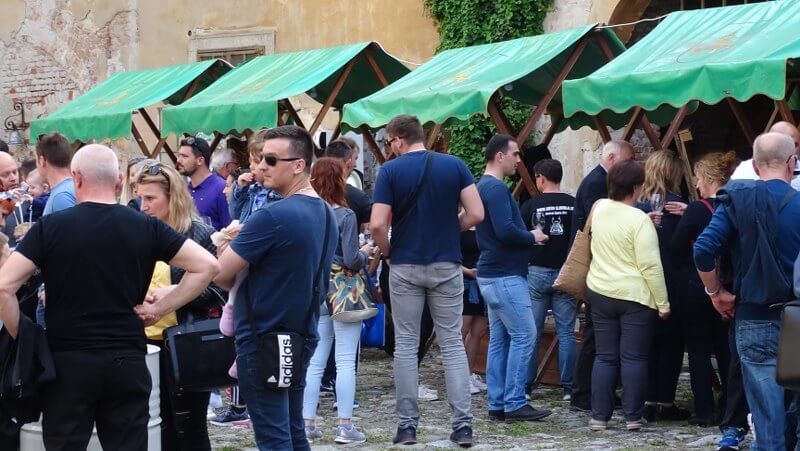
With the exception of the Podolski winery from Križevci, all the other wineries were from the Danube region, and it can be said that the Danube is the link which connects them all. Although it is not perceived as such by the public, Valpovo could be said to be located in the Danube region. Namely, the only suburb of Valpovo situated on the Drava river is located 42 kilometres from the point when the Drava meets the Danube River.
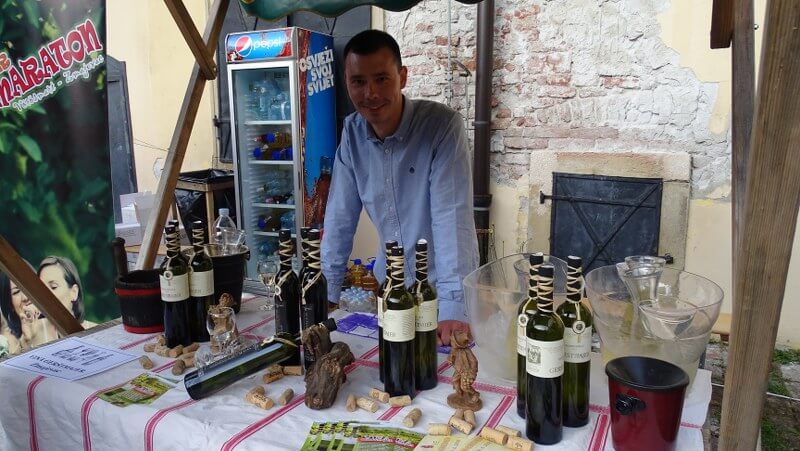
The Baranja wine area was presented by wineries Gerštmajer, Josić, Kolar, Kalazić, Svijetli Dvori, Szabo and Zajec. The Gerštmajer winery was represented by Ivan Gerštamjer Zelember, the fifth generation of the Gerštmajer wine dynasty from Baranja. Their wines are already well-known to everyone; for most connoisseurs, they represent the essence of traditional, original Baranja wine-making.
The other winemakers from the Baranja area were represented by the head of the Baranya Julia wine shop from Zmajevac, Gabriella Gerštmajer, who is also the vice-president of the Surduk association, organiser of legendary events in Zmajevac such as the Wine Marathon.
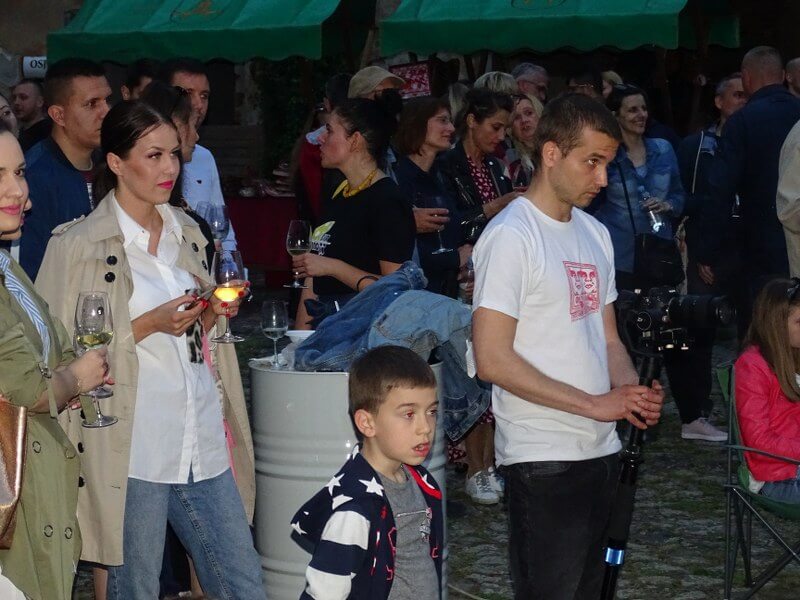
The Josić winery also comes from the Baranja wine capital Zmajevac. In addition to their wines, also highly acclaimed is the Josić winery’s restaurant, where their wines are served and paired with Baranja delicacies. Recently they decided to rebrand the visual identity of their wines, but the quality has remained at an exceptional level.
The Kolar winery comes from Suza, a town connected to Zmajevac and through which you must pass if you are coming to the wine capital from the direction of Kneževi Vinogradi. The Kalazić winery is on the road that runs from Zmajevac to Batina. Svijetli Dvori and Szabo wineries can be found in the Karanac ethno-village. All Baranja wineries presented at the festival came from the Kneževi Vinogradi municipality, which is just one of nine local self-government units in Baranja.
The Erdut wine area is located to the southeast of Baranja. This area geographically belongs to Slavonia, and it was represented by wineries Danubio, Iuris, Magistra and Siber. The Ilok wine area was represented by the Buhač, Papak and TRS wineries.
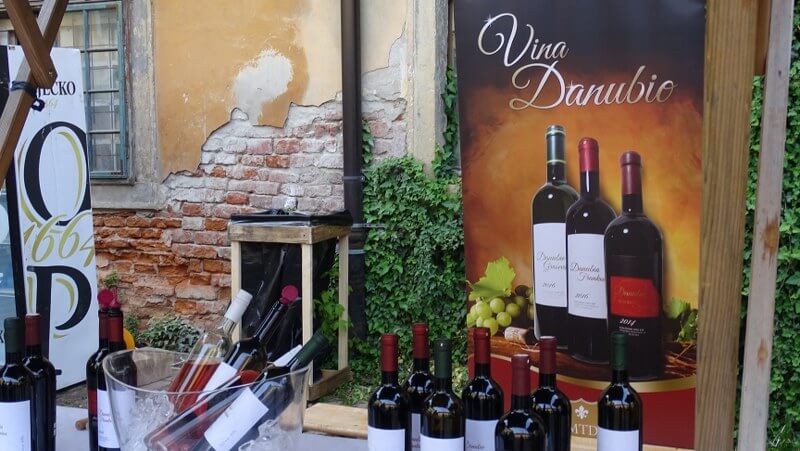
The cheese producers who came to the festival were family farms Geto from Lug, Glavaš from Bizovac, Gašić from Beketinci, Đurković from Marjančaci, Lehki from Gat, Pranjić from Drenovci and Mala Mljekara from Valpovo.
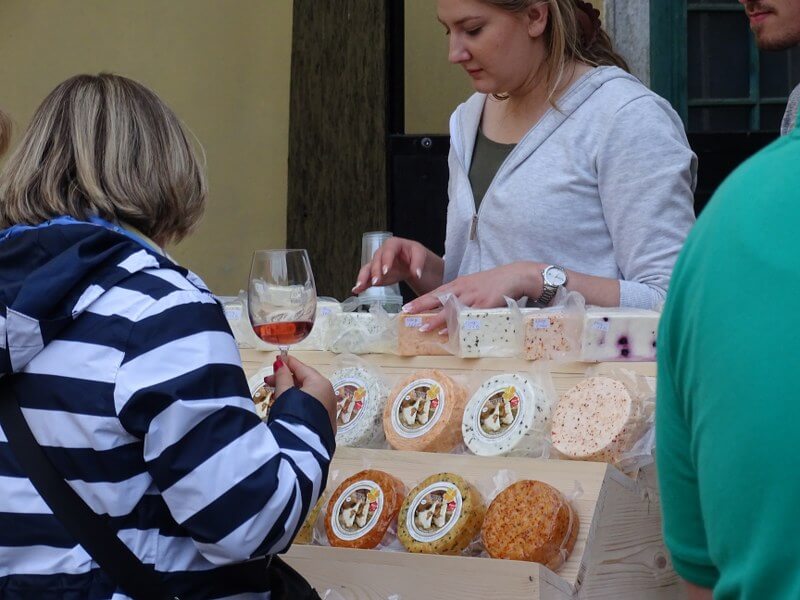
The Golubov family farm from Draž presented its elderberry juice, while family farms Brkić and Kraljik showed their cured meat products. The Horvat family farm from Duboševica prepared homemade pasta with poppy seeds and walnuts.
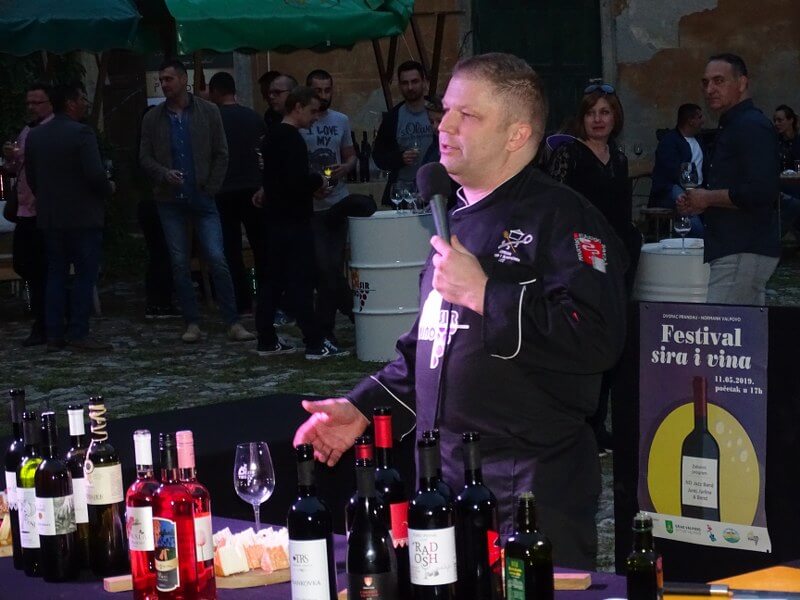
The highlight of the festival was the pairing of cheeses and wines, led by Tomica Đukić, the chef of the Osijek Hotel restaurant and the chief cook of the Croatian national football team.
More wine news can be found in the Lifestyle section.
Vinistra 2019 – Innovative Gourmet Event with Top Istrian Wines
The 26th edition of Vinistra, perhaps the most important Croatian wine festival, also offers excellent food. Istrians know quite well that cod and wine are fantastic when paired together, and this exceptional combination was presented in a somewhat more modern version in the third part of the Istrian Delicacies workshop.
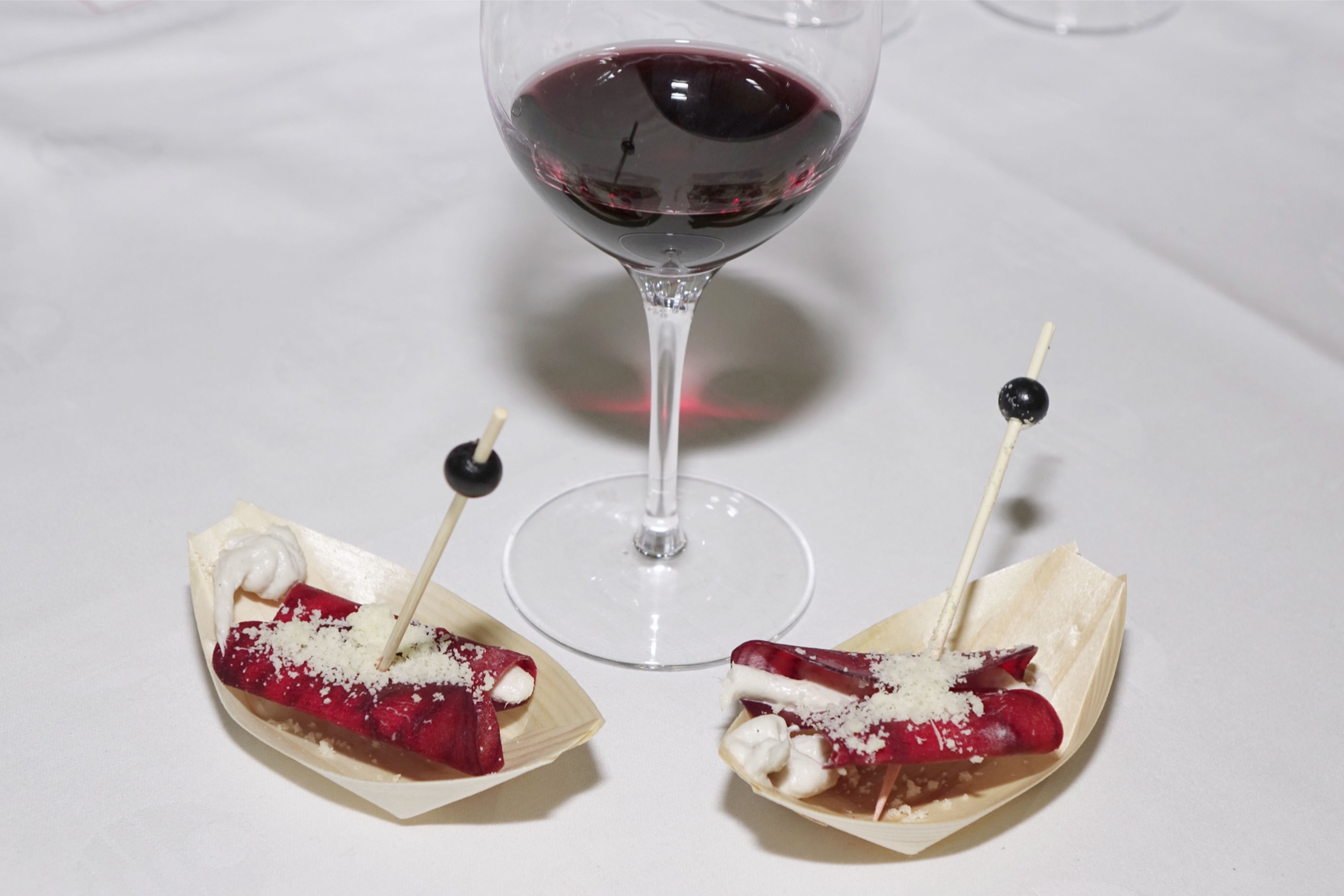
Twins Ana and Marija Kovač, chefs at the Laguna Park Hotel in Poreč, discovered an explosion of tastes in cod dishes produced by the Milena craft, while Ivan Vrdoljak, the young sommelier at Plava Laguna, took care for an excellent wine selection. The ice cream with Oliveto cod and olive oil powder was paired with Zigante’s sparkling wine Chloe Brut, while marinated anchovies with apple apples, mint and Picantino cod were paired with 2018 Malvazija Herak & Smoljan.
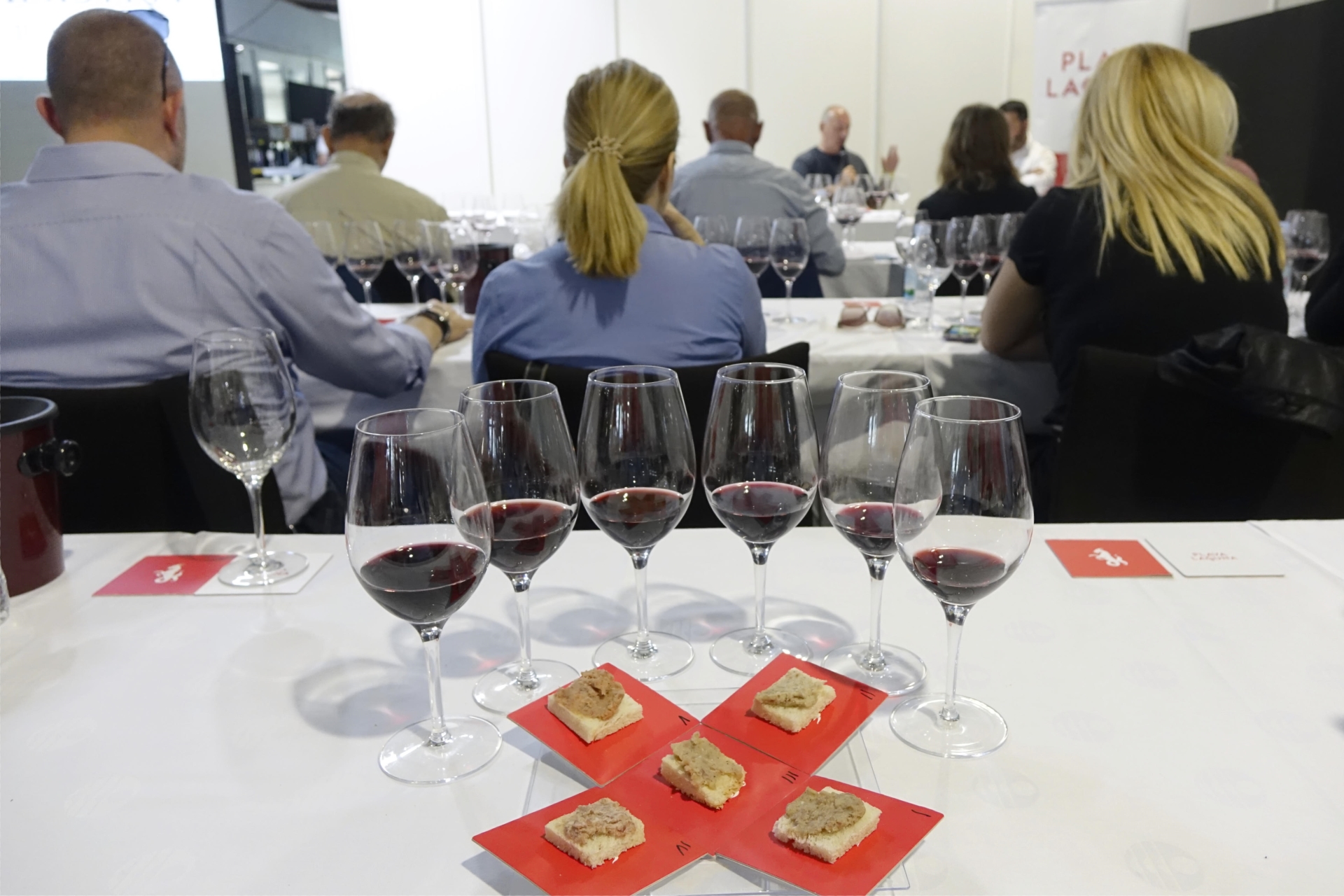
Next, black focaccia sandwiches and pickled vegetables with Oliveto cod were served with 2017 Malvazija Ritorno by Lunika Vina. Tartufino cod with avocado mousse, pancetta chips and red Istrian soil was paired with the only Istrian Crna Malvasia from 2015 produced by Motovun wine master Klaudio Tomaz, and the event ended with raw beet ravioli with white cod and sheep milk cheese served with 2015 Plavac Mali, not from Dalmatia but from the island of Krk, or more precisely from the Vina Katunar cellars in Vrbnik.
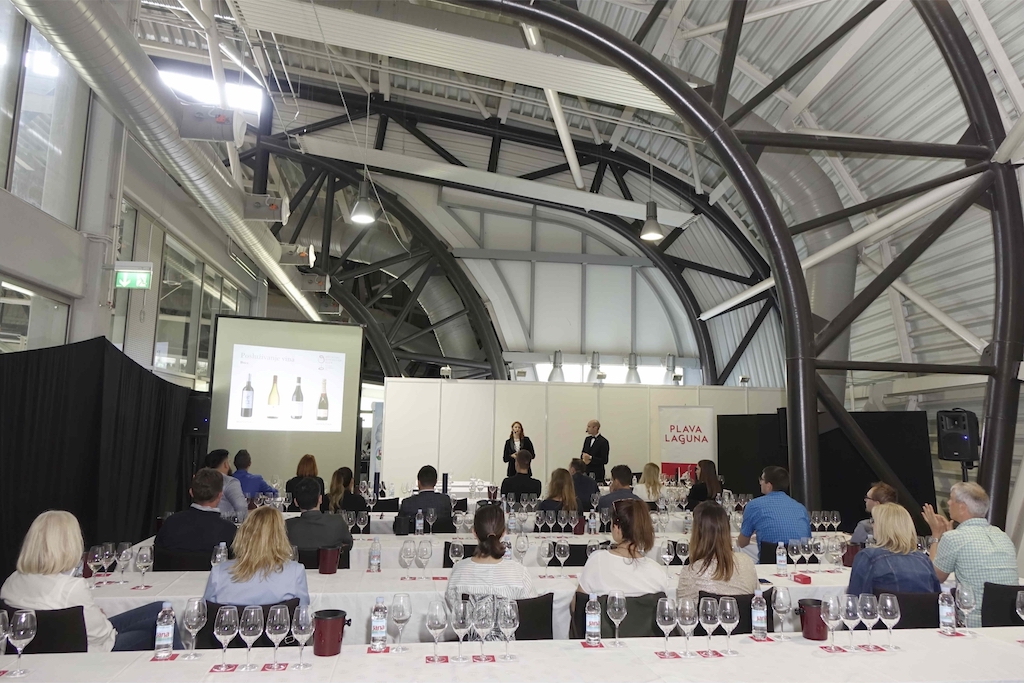
The workshop led by journalist and gastronomy connoisseur Davor Šišović discussed the pairing of Istrian dishes with wines. “In Istria, the tradition is to drink wines with cured meat products made from pork. But, when you drink a sip of wine with a bit of prosciutto or a slice of sausage, by the time you swallow the food, the wine and all of its flavours are long gone. That is why we have worked together with prosciutto producer Jelenić to prepare spreads of prosciutto, sausages, “žlomprt” and pancetta, which we paired with cuvees of Istrian red and white wines – Mozaik 2015 by Alfred Cossetto, Caldierosso 2016 by Benvenuti, Moro 2016 by Marino Rossi, Damjanić’s Clemente Crni 2015, Cuvee 2013 by Ritoša, and Matošević’s Grimalda Crna 2016. These are insufficiently explored, but excellent wines. I think this is the path both prosciutto and wine producers should follow,” said Šišović.
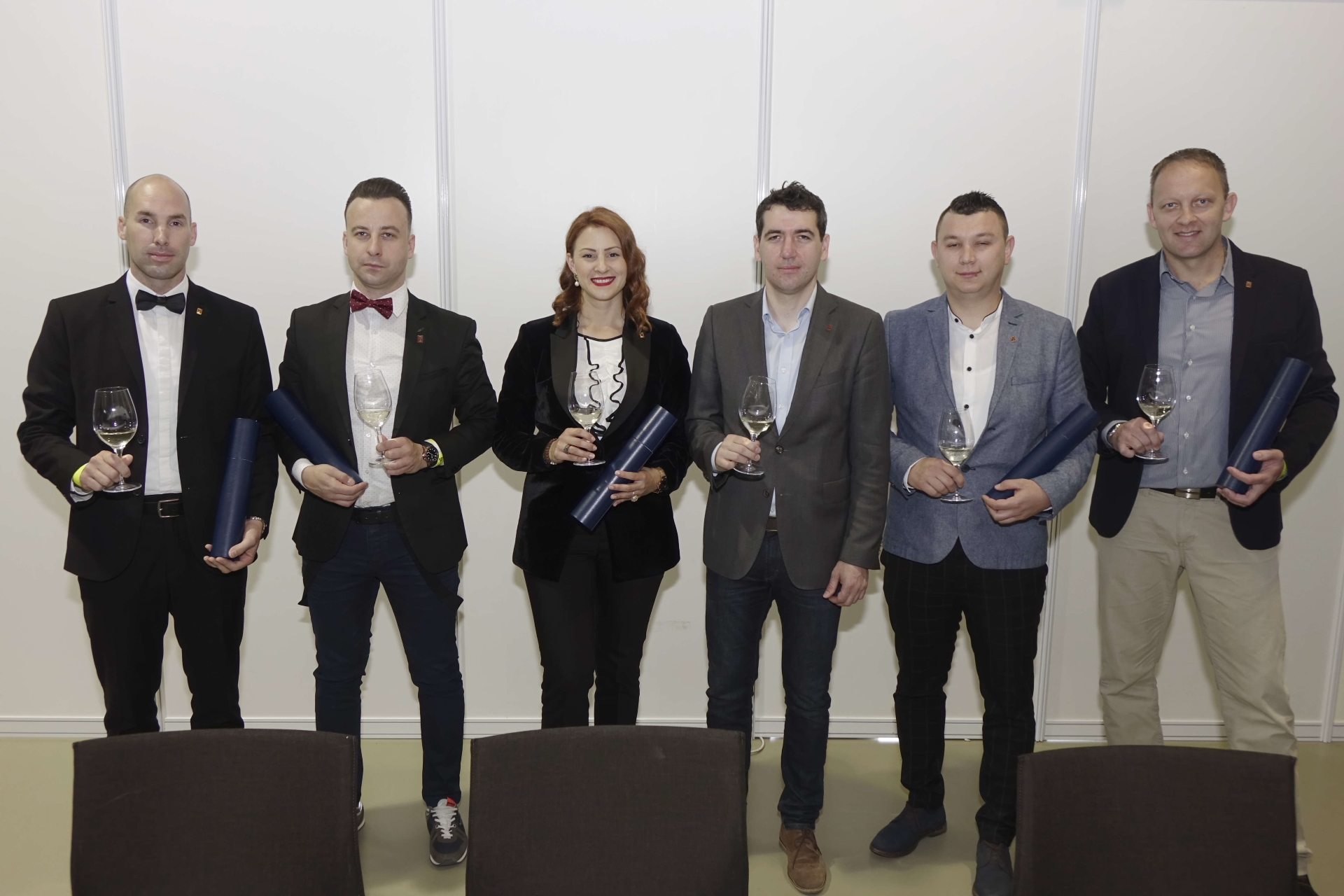
Paolo Jelenić agreed and announced the possibility of producing such spreads for the market. For the Wines of Istria workshop, aimed at foreign guests who do not speak Croatian and do not know much about Istrian wines, sommelier Filip Savić selected fresh Malvasias Coronica and Kozlović, and Damjanić’s 2016 Malvazija Akacija, and fresh Muškat Prelac, 2016 Merlot Festigia by Vina Laguna , Tomaz’s 2015 Teran Barbarossa, and for the end, Muškat with dried berries, also by Prelac.
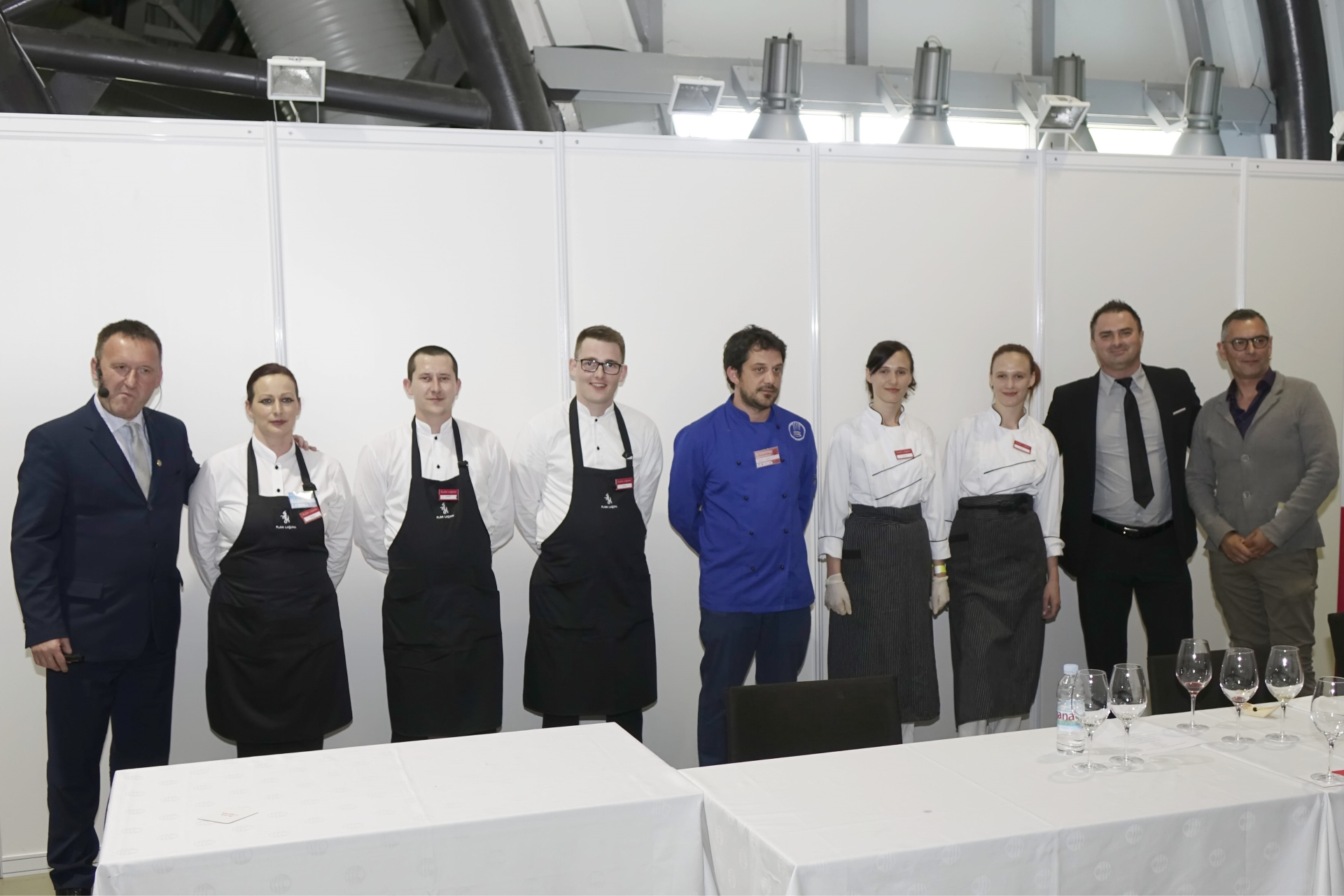
On the second day, Vinistra awarded diplomas for student wines made by students of the Winemaking Studies in Poreč and for the sommeliers of the Croatian Sommelier Club. Presenting the challenges of the sommelier profession, Ines Matić and Filip Božić used the workshop on sommelier courses to send a message – taste the wines, enjoy them every day because every wine is interesting; sharpen your senses and discover new experiences.
More wine news can be found in the Lifestyle section.
All phots by Danilo Dragosavac
Australia Meets Croatia at Bornstein Wine Bar
On Wednesday, May 8, the legendary Bornstein wine shop and wine bar at the Kaptol in Zagreb was the venue for a special “meeting” between Croatia and Australia at a gala dinner “Australia meets Croatia”, a part of the G’Day in May project – the typical Australian abbreviation for “hello” or “good day”. The dinner and wine pairing at Bornstein was organised together by the Embassy of Australia, the Bornstein wine shop and wine bar, and the dynamic Women On Wine association from Croatia. The name of the project illustrated the fact that the evening would be relaxed and not very formal, regardless of the fact it was attended by H.E. Elisabeth Petrovich, the ambassador of Australia.
Australian wines were paired with Croatian food and vice versa, and the evening began and ended with exceptional wines from one of Australia’s oldest wineries, D’Arenberg (1912), from the world-renowned and well-known wine region of McLaren Vale from the very south of the Australian continent. It is a Mediterranean-like climate area, so the wines are expressive, with pronounced aromas, and the winery is renowned, in addition to its excellent wines, for the unusual names it gives to its wine labels.
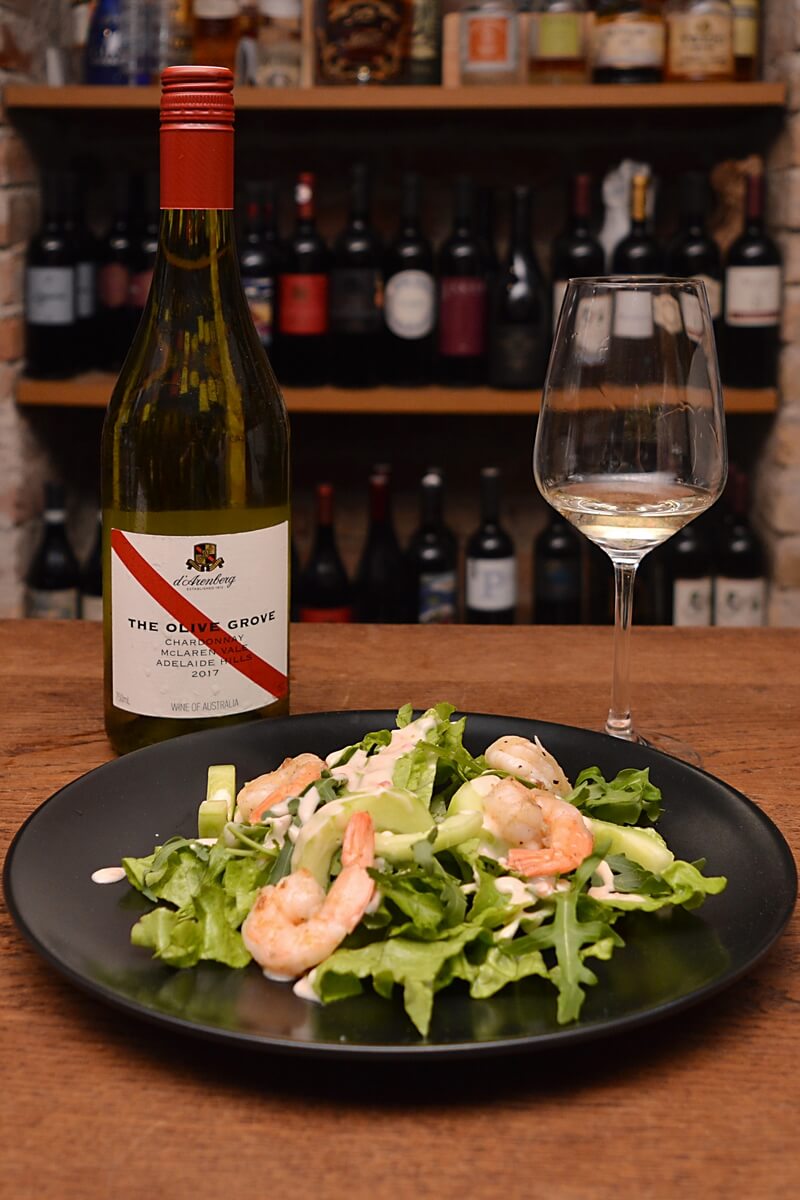
The first wine, The Olive Grove Chardonnay 2017, is a wine of dramatic fruitiness (peach, melon, quince), creaminess and, unusually for Chardonnay, spicy aroma in the aftertaste. It was nicely paired with the grilled mini shrimps on cutting lettuce prepared by Bornstein. About 50 guests returned to the Mediterranean, but the real Croatian one this time, thanks to Jo Ahearne, a London-born who began building her wine career in Australia and several years ago moved to Hvar to become a wine producer there. Jo Ahearne is the only woman in Croatia holding the Master of Wine title, and there are fewer than 150 such masters in the world.
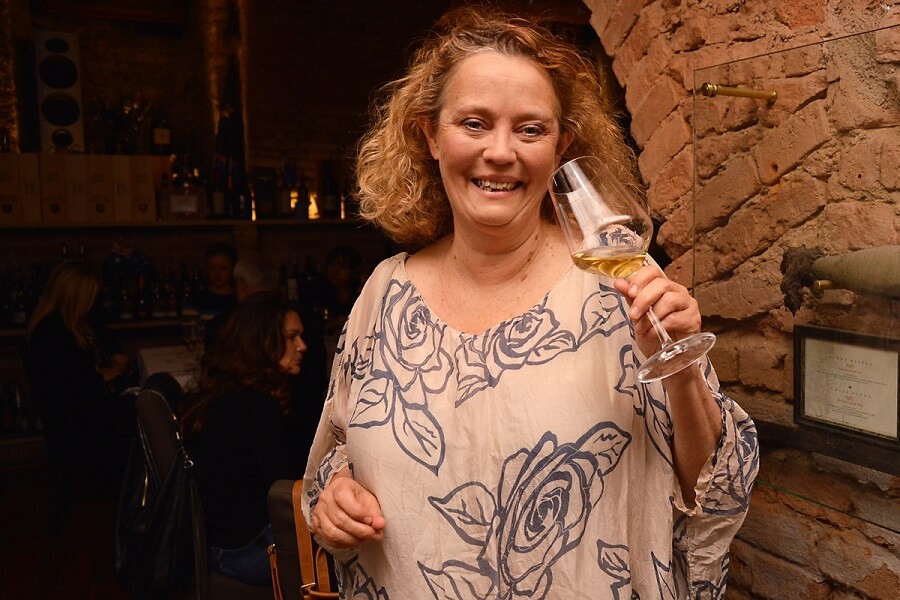
Ahearne presented two of her wines – Wild Skins and Plavac Mali. Wild Skins is a blend of three autochthonous Dalmatian white varieties – Bogdanuša, Kuč and Pošip – a great wine whose structure is similar to the structure of macerated white wines with quince aromas and the notes of honey and spice herbs. The rabbit ragu with gnocchi was an excellent pairing for this wine, created by the FinoVino restaurant culinary team.
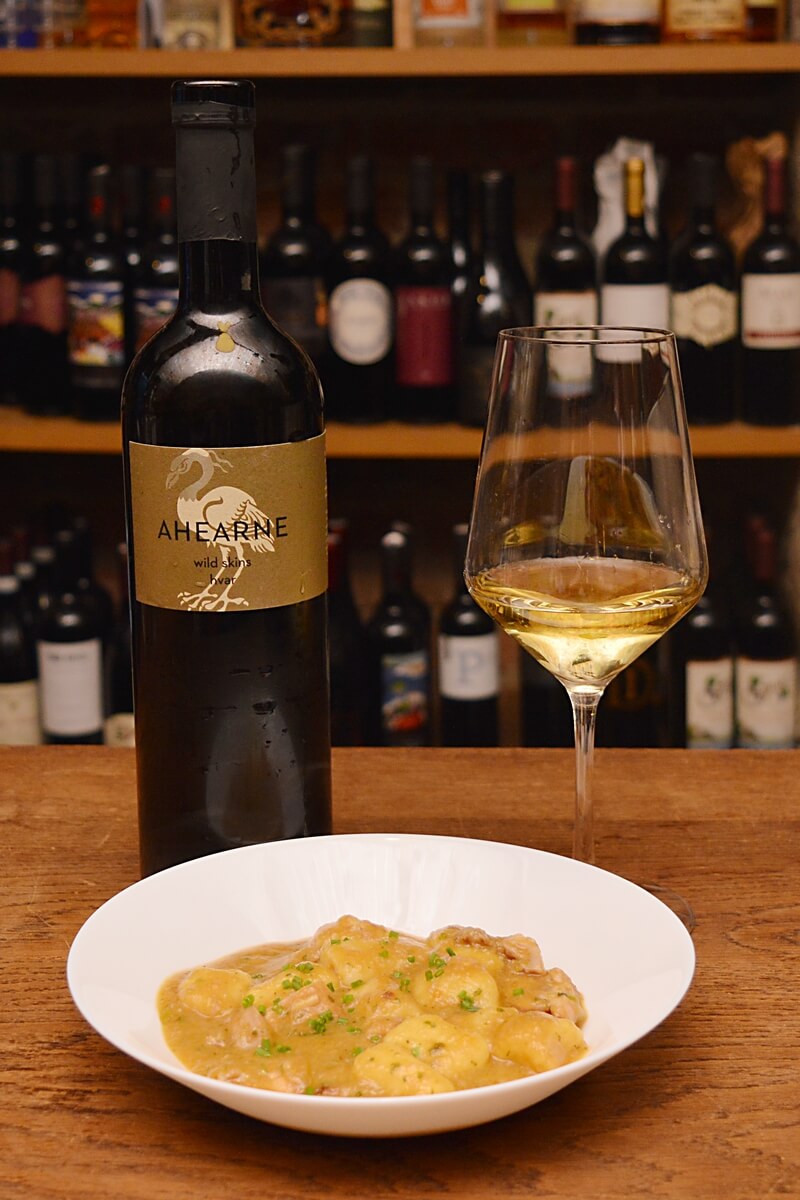
The 2014 Plavac Mali presented Dalmatia in a slightly different light. By ageing in oak barrels from Burgundy in France, the wine demonstrated the freshness and lively fruitiness of ripe plums, with pronounced herbal notes and traces of dark chocolate. Lamb chopsticks and browned polenta from the Fino Vino restaurant received the compliments from the audience, and together with Plavac Mali, they were the best pairing of the evening.
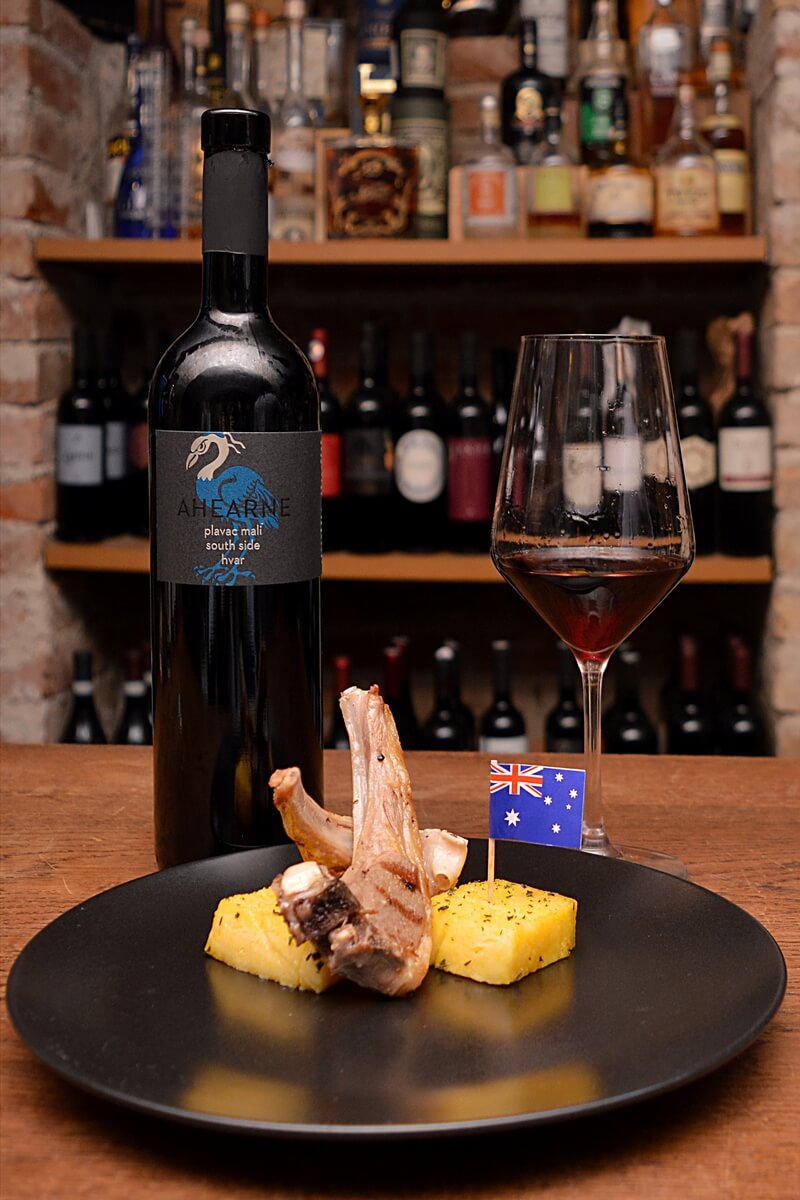
The event ended with The Footbolt Shiraz 2016, a typical representative of the Australian Shiraz. Plum and blackberry fruits could be felt in it, with a spicy aroma at the end, paired with the “icing on the cake” – a dessert in the form of a roll called the Pavlova (cake), made by the Australian Embassy’s chef.
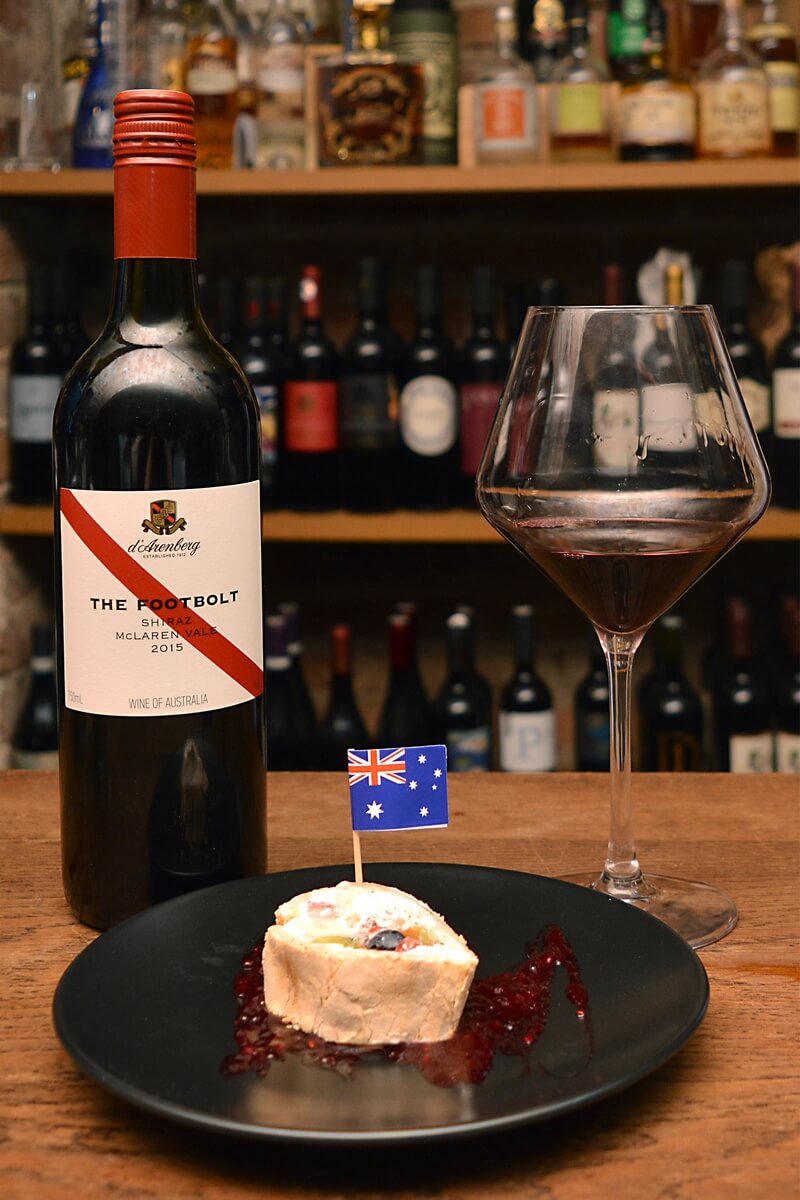
It was a memorable evening and a fascinating and positive mix of different continents, cultures and tastes.
More food and wine news can be found in the Lifestyle section.
Photos by: Silvija Munda
Main Exhibition of the 6th Dubrovnik FestiWine Festival Held
Dubrovnik has long been positioned as a destination that you have to visit and experience. For the sixth consecutive year, the springtime in Dubrovnik brings us the Dubrovnik FestiWine, which brings together winemakers, wine fans, experts and professionals and offers them a chance to taste excellent wines, meet up with hardworking winemakers, and take part in exciting workshops – because “It is time for wine!"

In the beautiful surroundings of the famous Sunset Beach located on Lapad, the main wine exhibition of the 6th Dubrovnik FestiWine Festival was held. The attendees were welcomed by Dubrovnik-Neretva county prefect Nikola Dobroslavić; member of parliament Sanja Putica, an envoy of the speaker of the Croatian Parliament; state secretary for tourism Frano Matušić; and Dubrovnik deputy mayor Jelka Tepšić.
“It is a great honour and pleasure for Dubrovnik that the 6th Dubrovnik FestiWine is held in the town which is the champion of tourism. We believe that Dubrovnik deserves the best, and that is exactly what can be found in Dubrovnik-Neretva County: the best wines that promote not only the town and the county, but also the whole of Croatia,” said deputy mayor Tepšić.
“Tourism Ministry wants to promote the production of indigenous wines as much as possible so that they can find their way to the tables of our restaurants as soon as possible,” said Matušić.
Dubrovnik-Neretva County, as the organiser of the event, says that the central message of the festival is the promotion of further development of the winegrowing and winemaking in the Dubrovnik area. In line with this, county prefect Nikola Dobroslavić officially opened the festival.

“It is my honour to open the 6th Dubrovnik FestiWine. Congratulations to the organiser, Dubrovnik PartneR, which helps us produce all the events we do as a county. We have fantastic white and red wines, and we follow the approach that our wines must represent the backbone of wine lists, that they must be prominently placed on them, and that holidays cannot be complete unless the guests taste the local wines. From their trips, they should bring memories of wines and also the best souvenirs – local wines!” Dobroslavić said.
The opening ceremony also included the presentation of the best wines from the Dubrovnik FestiWiNe Trophy 2019 international competition. The international jury has done a great job by testing and rating 110 wine samples. It was led by president Bojan Kobal, who headed the evaluation process throughout all six years.
The best wine is TRAMINAC LEDENO VINO 2012., Šimanović family farm, Kostel Pribički from Krašić; the best red wine is DINGAČ SELEKCIJA 2012., PZ Dingač, Potomje, Pelješac; the best rose wine is ROZE 2018., Siber Dušica family farm, Osijek, Erdut wine area; the best white wine is CHARDONNAY 2017., Vina Kalazić, Zmajevac; Baranja wine area; the best sweet wine is TRAMINAC LEDENO VINO 2012., Šimanović family farm, Kostel Pribički, Krašić wine area; the best sparkling wine is ETNA SPUMANTE BRUT 2013., Nerello Mascalese; Societa Agricolla Destro Sel, Italy; the best red wine in Dubrovnik-Neretva County is DINGAČ SELEKCIJA 2012.; PZ Dingač, Potomje; Pelješac; the best rose wine in the county is ROSE 2018., Zlatko Bačić family farm, Blato, Korčula wine area; the best white wine in the county is GRK 2018., Zoran Cebalo Popić family farm, Lumbarda, Korčula wine area; the best Pelješac area wine is DINGAČ SELEKCIJA 2012., PZ Dingač, Potomje; the best Konavle area wine is MALVASIJA DUBROVAČKA 2018., Božo Metković, Molunat; the best Korčula area wine is GRK 2018., Zoran Cebalo Popić family farm, Lumbarda; the best Komarna area wine is PLAVAC MALI 2015., Vinogradi Volarević, Metković; the best Dingač is DINGAČ SELEKCIJA 2012., PZ Dingač, Potomje.
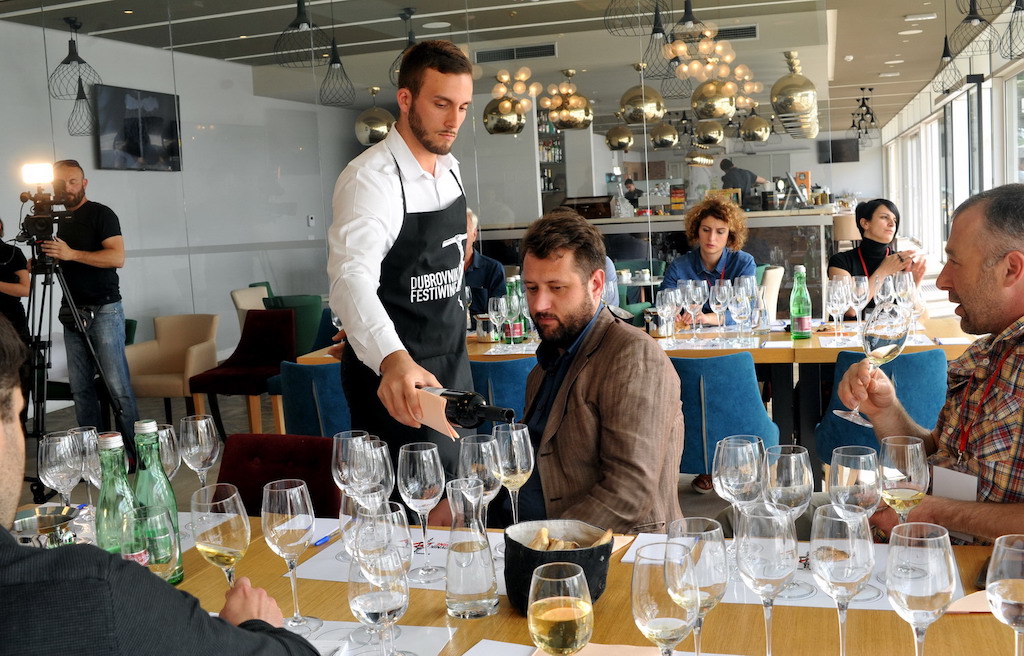
The popular Blind Date was held again this year, pairing the wines of the Dubrovnik-Neretva County with well-known autochthonous Mali Ston oysters. The jury selected the winner for 2019: the wine which paired best with the Mali Ston oysters was QUATTRO Chardonnay 2018 by the Volarević winery from Komarna.
At the traditional charity gala dinner at the Palace Hotel, winning wines from last year's competition were served with top-quality dishes prepared by chefs: host Saša Računica and guest chef Jure Tomič from the Debeluh restaurant in Slovenia. The proceeds from the gala dinner will fund young culinary talents and sommeliers. The expert jury selected two scholarships to be presented: to cook Toni Kužnin and sommelier Nikša Karaman, who will learn, work and acquire new skills together with mentor Jura Tomič in Brežice from 20 November to 20 December.

With a particular focus on education, the event emphasised the importance of this year's first FestiWine wine school in Dubrovnik, held under the creative mentorship of the wine academician Mira Šemić, and festival workshops, which first day focused on original varieties (Dubrovnik Malvasia, Pošip and Grk), and the second day on friends of the festival (sparkling wines from the Sparkling Wines Salon in Zagreb, Jo Ahearne’s MW wines from Hvar, and Slavonian dessert wines with sweet snacks).
All photos by Julio Frangen
More wine news can be found in the Lifestyle section.
Rooftop Lateral Veuve Clicquot Champagne Bar Opened
The tallest bar in Croatia is located on the 26th floor of the VMD building in Strojarska Street in Zagreb. That is Rooftop Lateral, and on Wednesday this green oasis in the centre of the city with a million dollar view also became the Rooftop Lateral Veuve Clicquot Champagne Bar, opened in collaboration with the Miva Wine Gallery.
Rooftop Lateral boasts a garden setting with a unique view of the Croatian capital, so it is not surprising that the opening of Veuve Clicquot Champagne Bar brought together many who enjoyed diverse programmes, excellent cocktails and friendly staff there last year as well.
Together with the beginning of spring, the bar has arrived at the same location where guests will be able to enjoy the beautifully landscaped space, the great atmosphere and the Veuve Clicquot champagne bubbles.
In addition to the traditional Veuve Clicquot Brut, Veuve Clicquot Rose and Veuve Clicquot Rich are also offered, accompanied by the rest of the wide-ranging offer of Rooftop Lateral – a great selection of premium wines, proseccos and cocktails. The official launch of the bar is on Tuesday, April 23.
More news about the wine scene in Zagreb and the rest of Croatia can be found in the Lifestyle section.
WOW Members, Iločki Podrumi and Bottega Among the Stars!
On Wednesday, April 17, at the Bornstein wine bar and wine shop at Zagreb's Kaptol, the first edition of the small but stellar wine project of the charming name WOW ASTRO WINE was held. It was a fun and educational evening in which wines and astrology merged.
The project was created under the auspices of the WOW association and was conceived by WOW member Maja Kuzmanović, WSET2, with the support of astrologist Jadranka Perić Adrianna Astrology. The idea was strongly supported by WOW president Sanja Muzaferija and Doris Srpek, a WOW member who hosted the event at the legendary premises of Bornstein, the oldest, but also the most innovative Zagreb wine shop.
The wine-astrology event included all the Zodiac signs and astrology in general – as an introduction to the future even more exciting and more specialised evenings about stars and wines. All 12 Zodiac signs were compared in the context of significant varieties of grapes and wines, so we could find out, at least in principle, who is what kind of taster, which wine should be given as a present to whom, who enjoys which wine characteristics...
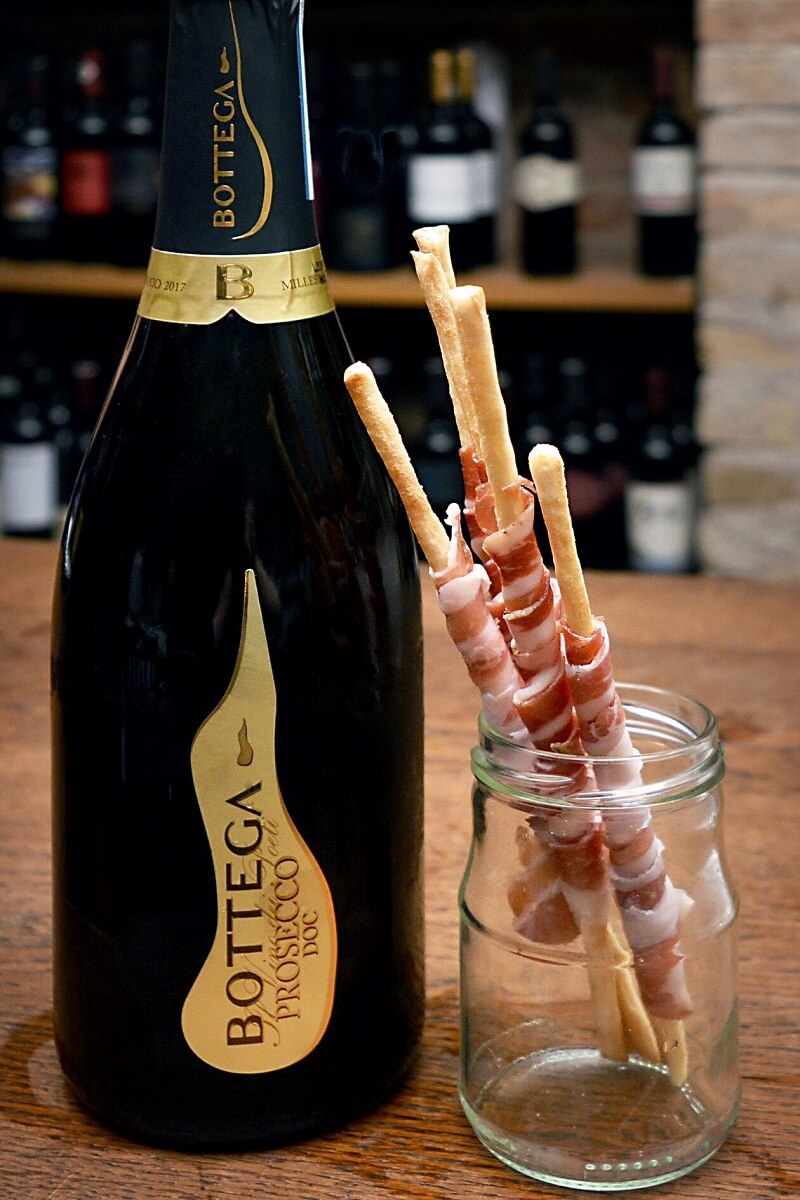
With the help of the Bottega brand ambassador, sommelier Ines Matić, the evening started with sparks – the 2017 Bottega Prosecco Milessimato. Fresh, fruity and herbal at the same time, it sparked until the presentation of the first of the four wines by Iločki Podrumi (Ilok Cellars) which were described by Željka Balja, who briefly told the history of the great winery.
Did you know that every moment, every event and not just every person – can have their natal map? This event was held in the sign of Aries, and for this reason, the first selected wine was 2018 ROSÉ FRANKOVKA by Iločki Podrumi, a wine of exceptional freshness and fruity aroma, with emphasis on raspberry, ideally suited to the dynamic energy of Aries. The harmony and elegance of the body, as well as outstanding balance, are undoubtedly the features of Libra. And the ascendant of the event was in the sign of Libra, as well as the Moon that was also in Libra that evening.
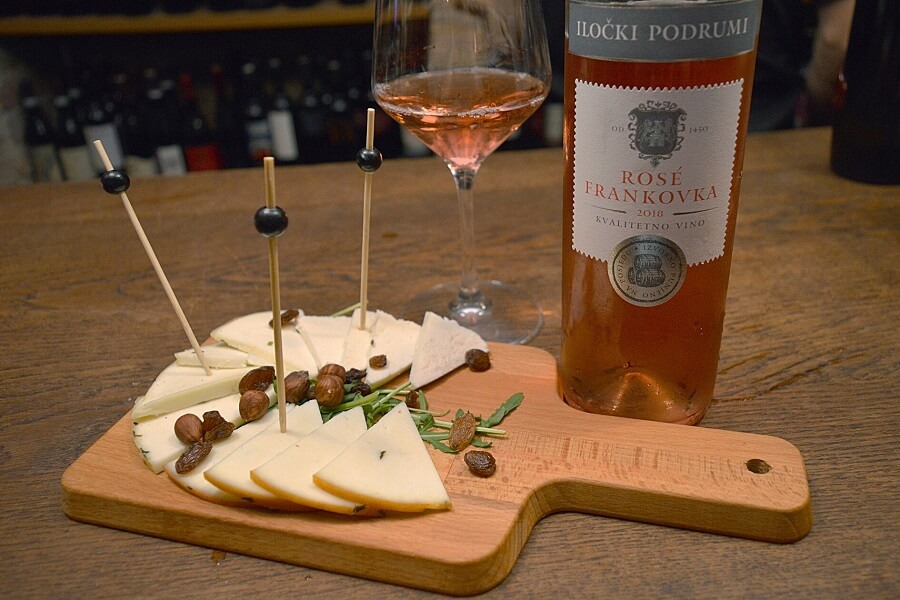
The second wine was 2011 GRAŠEVINA VELIKA BERBA 2011 by Iločki Podrumi. The wine proved that this vintage was extraordinary and that it was indeed great in every respect. Dry, gold-yellow colour, with fruity aromas of apples, pears and dried fruits, creamy and complex, aged in barrels for three years. Sagittarius best describes this wine, just like this wine can describe the Sagittarius as a person in love with everything unknown to him, the new, the big, the solemn... The wine was so expressive that even the audience immediately guessed to whom it "belongs" and with whom it is best paired.
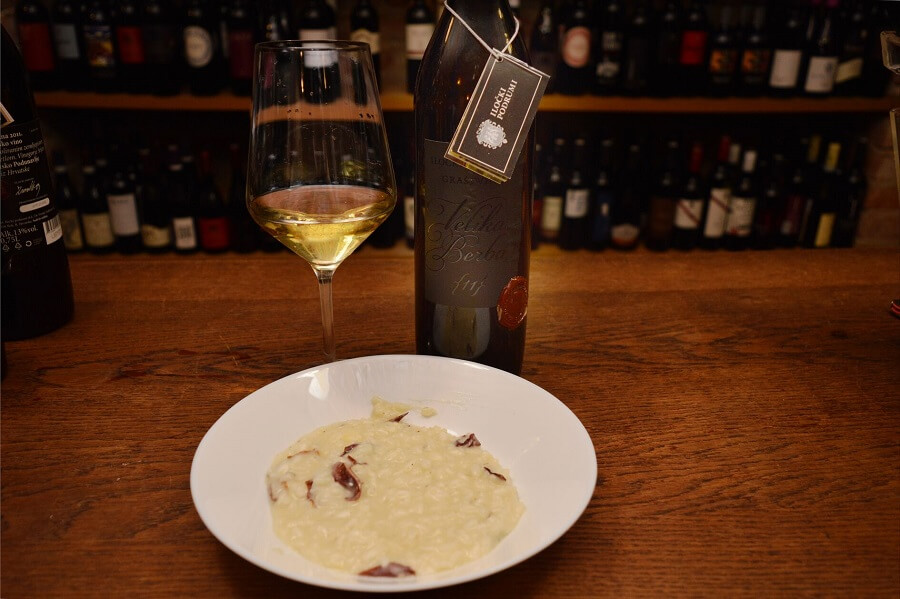
The third wine was 2017 KAPISTRAN CRNI, another top-quality wine, with 70% of Frankovka and 30% of Cabernet Sauvignon. Deep ruby red colour, delicate fruity aromas with notes of blackberry and plum, and a light touch of smoke and black chocolate, full, complex... The astrological-oenological analysis concluded that it is mystical like Scorpio – governed by the powerful Pluto, intense, passionate, fearless and emotional. With a dose of chilly-spiced snack, the wine became even more powerful.
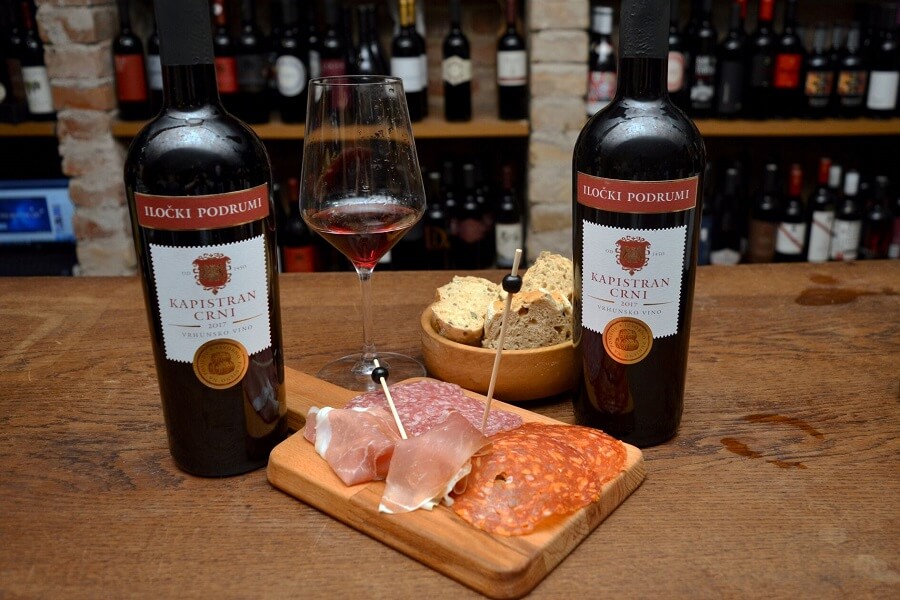
The evening ended with a predicate wine – Traminac of the selected harvest 2016. The fine wine of the amber colour, intense and rich in rose scent, with gentle honey notes. Full, harmonious, sweet, but well-balanced – it matches the Zodiac sign of Libra which loves refined tastes and scents, romance and all that is sensuous.
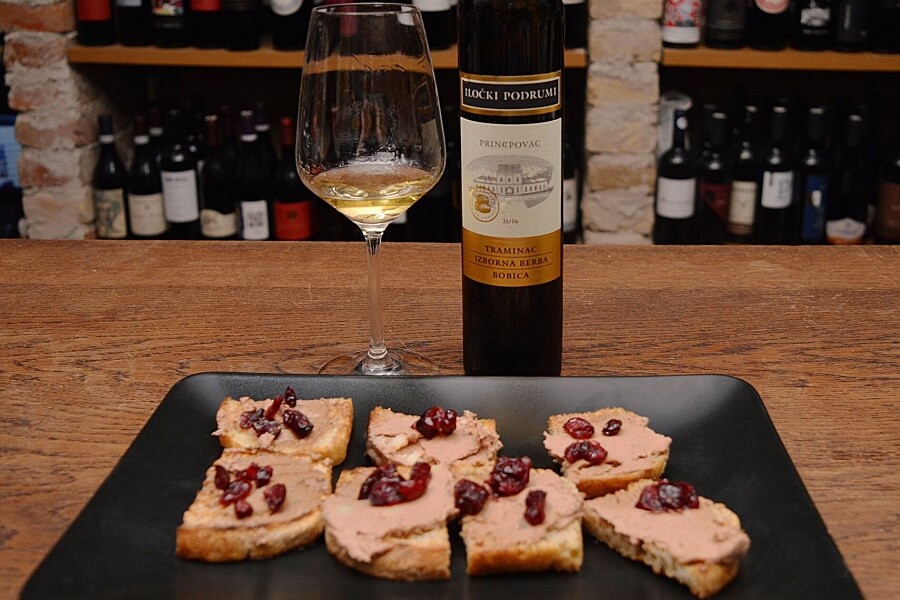
The guests and media representatives went home satisfied with the excellent snacks by Bornstein, enchanted with the music selected according to the Zodiac sign of each of the presented wines, rapt with wine and stars – which were definitely on the WOW side that evening.
Until the next time, let stars and your favourite wine protect you.
More wine news can be found in the Lifestyle section.
All photos by Silvija Munda
World Malbec Day Celebrated in Zagreb
Did you know that Malbec has its day? The World Malbec Day is celebrated on April 17 to mark the day when Argentinian President Domingo Faustino Sarmiento officially began the mission of transforming the Argentine wine industry. On that day in 1853, he selected the French soil expert Micheal Aime Pouget to bring new grape varieties. Among the varieties he picked was Malbec, and that is how it all started.
Pouget continued experimenting with the adaptation of French varieties to various Argentine regions, and Malbec quickly adapted and developed even better than in France, its country of origin. Over many years, with a lot of effort and hard work, it has become the leading wine variety in Argentina.
The World Malbec Day was held for the first time on April 17, 2011. Since then, many different events and celebrations have been taking place around the world on that day. One such event took place on Wednesday at the Swanky Monkey Garden Bar in Zagreb. The guests enjoyed a unique offer called Beef & Terrazas Malbec.
The Ofyr grill started heating up at 5 pm, followed by the preparation of the "ramsteak" by Beefshop. The star of the event was, of course, in the glasses, represented by the Argentinian winery Terrazas de Los Andes. The guests also drank fantastic 2017 Malbec Reserva – a wine of the famous Argentinian winery Terrazas de Los Andes, whose vineyards are located on the Andes slopes, about 800 m above sea level, and as such represent the unique terroir of the Mendoza region.
The wine won over everybody thanks to its colour, scent and taste. It is intense red with violet reflections, very fruity and concentrated, with a long, elegant finish. On the nose, in addition to the distinct aromas of mature red fruits like cherries and plums, we also find distinctive notes of violets, dark chocolate, and sweet spices and tobacco that stem from ageing in French oak barrels. In the mouth, the wine is well-balanced, fresh, with rounded tannins and excellent ageing potential. Cheers!
More wine news can be found in the Lifestyle section.
Croatia Ready to Conquer Serbia – With Wines
Exports are on the rise, and the quality of the wines has been recognised beyond the borders of Croatia, said Croatian Chamber of Commerce’s vice-president for agriculture and tourism, Dragan Kovačević. In 2018, Croatia exported 16 million euro worth of wines, of which 938,799 euro went to Serbia, an increase of 35 per cent compared to 2017, reports Agrobiz.hr on March 31, 2019.
Among the 300 top-quality wines from all over the world presented at the Wine Style wine salon in Belgrade this Saturday, there were 13 Croatian wineries – Medea, Kutjevo, Vinoplod-Šibenik, Zigante, PZ Vrbnik, Iločki Podrumi, Stina Vino, Degrassi, Dingač Skaramuča, Plavac Mali DNZ, Feravino and Pjenušci Peršurić. The participation at the Wine Style was co-financed by the Croatian Chamber of Commerce, as part of the project of promoting Croatian wines in Serbian market in 2019, worth one million kuna, with 80 per cent being financed from EU funds.
“The continuous promotion is necessary to create the brand, and we want Croatia to be branded in the eyes of the world as a country which can offer high-quality wines and autochthonous varieties. The results of efforts we make to promote the Croatian wines can be seen in figures,” said Kovačević.
"This project is significant. It is our pleasure to see that the state is looking at us in a different way and that the Croatian Chamber of Commerce is investing so much effort into Croatia becoming a wine country,” said Moreno Degrassi, the owner of the Degrassi winery.
The wineries also presented their offer at a promotional wine evening held at the Writers Club restaurant. It enabled the distributors and restaurant owners to experience the potential of new vintages under the guidance of the well-known sommelier Igor Luković. "The evening is a beautiful walk through three wine regions. Croatia has launched a wine renaissance, and the state and its institutions have recognised it in the right way. People in Serbia really drink Croatian wines, especially the ones from the coastal regions, which they remember from their summer holidays,” said Luković.
"The Serbian market is interesting to us because Serbs are happy to remember the times spent on Croatian coast and readily drink our wines. This has been proven by other winemakers who have already made a great success here, and I hope that we will find our place in the Serbian market as well," said Degrassi, who exports 15% of his production to Slovenia, Belgium, Sweden and Austria.
All the wineries will also be present at the Novi Sad Wine Salon in April, and the project will also provide for a trip to Dalmatia in May, in order to get the media and wine experts and distributors better acquainted with Croatian wineries.
The Croatian Chamber of Commerce has brought together all the wine producers under the umbrella brand “Vina Croatia - Vina Mosaica” to increase the visibility of Croatia on the global wine map as a country offering diverse and high-quality wines.
Translated from Agrobiz.hr.
More news about Croatian wines can be found in the Lifestyle section.

